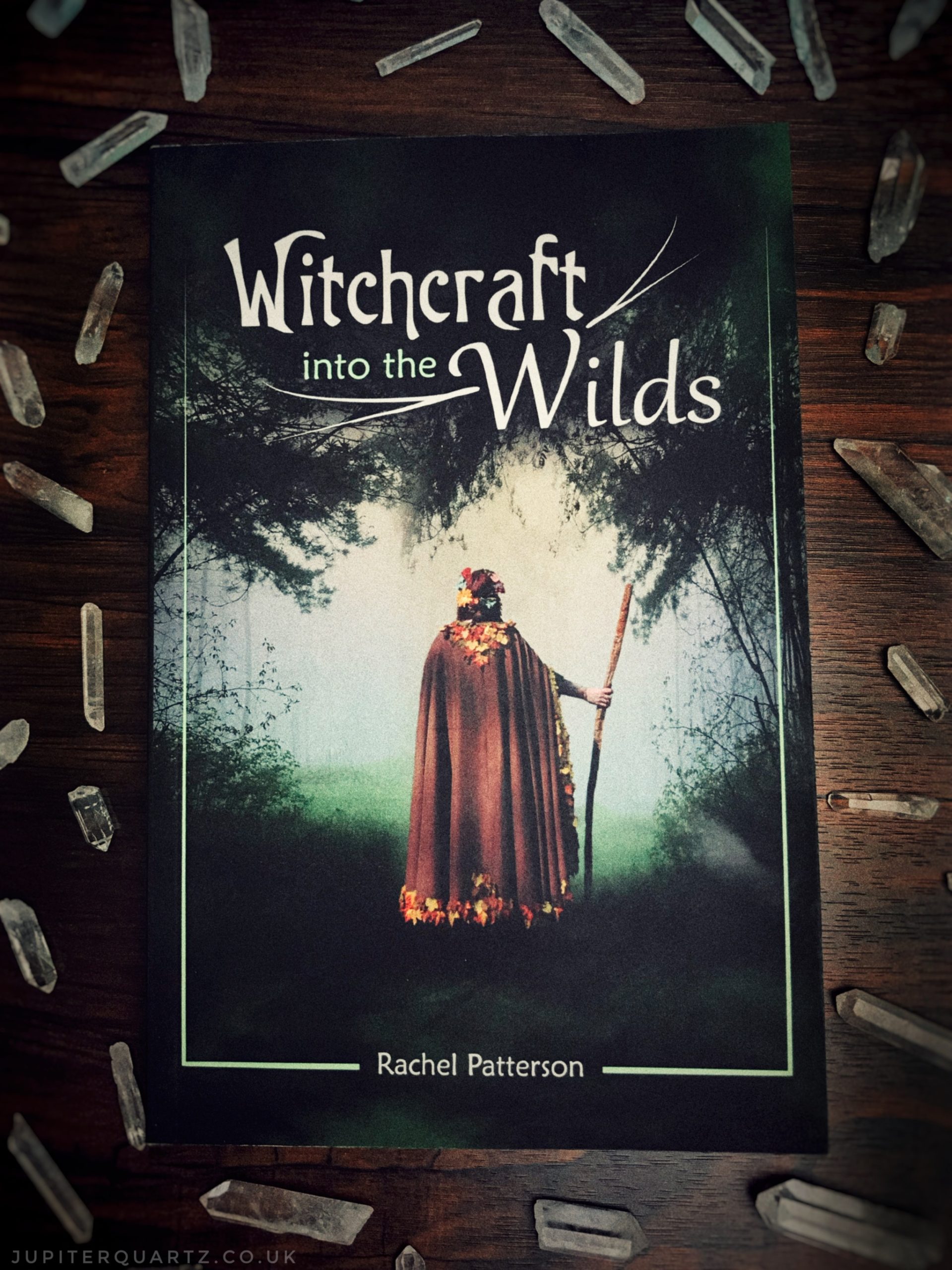Witchcraft into the Wilds by Rachel Patterson.
Witchcraft into the Wilds by Rachel Patterson is a relatively short and easy read covering a wide variety of topics such as altars, nature, symbols, witchcraft in the city, weather, elements, divination, and animals. It contains a nice overview of these subjects, and lots of correspondence lists and environmentally-sound advice. There are minimal Wiccan-oriented aspects which is great for those looking for a general 101 book. I personally am really happy to find a book using the correct definition of pentacle vs pentagram, as this is mistaken quite frequently in other books. The writing style is happy and casual/informal, which may or may not be every reader’s cup of tea. It is easy to read and is interesting, and helpfully includes journal prompts and tasks for the beginner reader to do.
However, there are a few points that I personally dislike or disagree with in the book. A few times throughout, the book mentions ‘negative’ black magic which is a historically racist term. The book then goes on to say it’s up to the reader whether to do negative magic or not whilst having a tone of disapproval. I am of the opinion that it’s up to the reader and the reader only whether they want to partake in negative magic or not, and shouldn’t be judged for their decision. On a similar note, it’s mentioned that love magic is unethical altogether. At times, the book just has a judgemental feel to it.
A few times, the ‘G*psy’ slur is mentioned, which has historical and current negative connotations and shouldn’t be used by those outside of the traveller community (I couldn’t find any information if Rachel is a part of this community or not). The book also contains aspects of cultural appropriation, such as using ‘smudging’ instead of smoke cleansing, which belongs to closed practices within Native American cultures and shouldn’t be used by those who are outside of that closed practice. Also, smoke shouldn’t be wafted around pets as was suggested in this book (this is very harmful to them as they have more sensitive respiratory tracts). When talking about bodily fluids, the writing style has an element of coyness which I found quite awkward to read as there is nothing embarrassing about bodily fluids. While on the topic of menstruation, the book states that only females menstruate which is an incredibly outdated and harmful trans-exclusionary belief.
Finally, nearing the end of the book, it mentions there is no Devil in witchcraft, which is historically false. Although Christianity’s Devil/Satan is uncommon in witchcraft (though a small proportion of witches and practitioners do acknowledge them in their craft), the folkloric Devil has huge historical and current involvement in witchcraft, and ignoring this is ignoring a huge part of witchcraft itself. The topics included in this book are incredibly brief and lack any references or sources, so if the reader is searching for a book with more depth or backed up sources, this book may not be the best book for that.
Overall, I wouldn’t recommend this book to a beginner as it contains so many aspects of unverified, outdated, or harmful ideas that a beginner wouldn’t necessarily be aware of. If a reader is already aware of these issues commonly found in witchcraft books, then I think this is an easy read that offers some beginner-level information.
Last reviewed: 14/03/23.
Disclaimer: Anything stated within these book reviews are based on the writer’s opinions, beliefs, and life experiences and should not be taken as universal truth. The writer’s opinion of said books are subject to change over time and reviews may be amended in future to reflect their most up-to-date opinion. It is generally recommended for you to read these books for yourself so you can form your own personal opinion.
Tags: books 101, rachel patterson, witchcraft into the wilds, witchcraft into the wilds rachel patterson